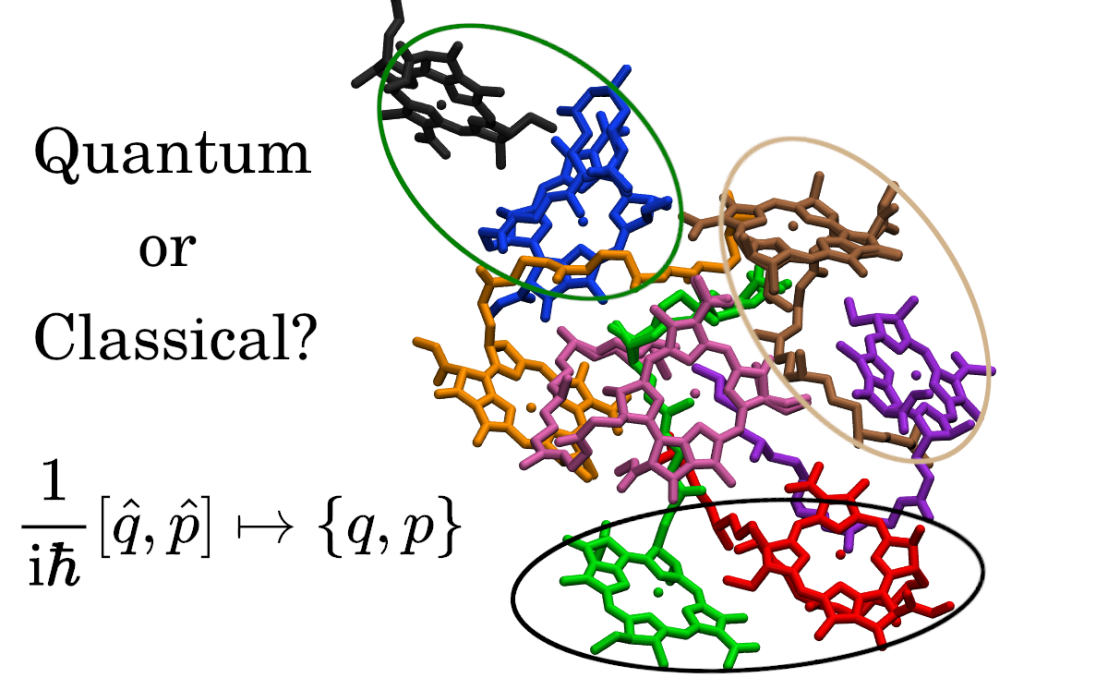Photosynthesis is more classical than previously believed

Photosynthetic organisms are known to use a mechanism of vibrationally assisted exciton energy transfer to efficiently harvest energy from light. A long-standing topic of debate is the importance of quantum effects in this mechanism. Traditionally this debate focused on the role of excitonic coherences, but after years of research, these are no longer regarded as relevant for the energy transfer. Instead, the efficient transfer of energy has recently been attributed to the nuclear quantum uncertainty, and would therefore not function if the vibrations were classical.
In a recent article, we analyse this claim and present a counter-example for the prototypical Fenna–Matthews–Olson complex. Using a method for propagating mixed quantum-classical trajectories (which was recently developed in the group), we show that a description in terms of quantum electrons and classical nuclei is indeed sufficient to describe the funneling of energy to the reaction centre. We compare these findings to previous classical-nuclear approximations that predicted the absence of an energy funnel, and conclude that the key difference is the ability of the present method to more accurately account for Newton's third law. Finally, we provide examples for other light-harvesting complexes where nuclear quantum uncertainty is likely to be more important.
Johan E. Runeson, Joseph E. Lawrence, Jonathan R. Mannouch, and Jeremy O. Richardson. Explaining the Efficiency of Photosynthesis: Quantum Uncertainty or Classical Vibrations? J. Phys. Chem. Lett. 13, 3392 (2021).Johan E. Runeson, Joseph E. Lawrence, Jonathan R. Mannouch, and Jeremy O. Richardson
